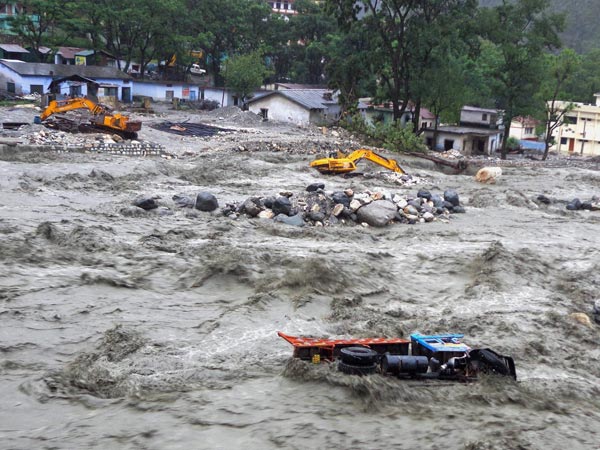
New study on climate change warns of many Uttarakhands
Many more Uttarakhand-type tragedies are waiting to happen in next ten years if leaders do not respond with planning and infrastructure building. The warning on rising waters and flooding is part of a study on climate change and Arctic methane published yesterday (July 24).
An area of two million square km will cause damage equivalent to the size of global economy. That figure is $60 trillion and likely to happen over the next 10 years. The damage is to the climate system and this is reflected in floods, droughts, storms and heat stress.
Eighty percent of the effects would occur in poorer economies in Africa, Asia and South America.
"The imminent disappearance of the summer sea ice in the Arctic will have enormous implications for both the acceleration of climate change, and the release of methane from offshore waters which are now able to warm up in the summer. This massive methane boost will have major implications for global economies and societies," said Peter Wadhams, a professor of ocean physics at University of Cambridge, one of the authors of the new study published in Nature magazine.
The Nature paper researchers - Gail Whiteman of Erasmus University in the Netherlands, and Chris Hope and Wadhams - described the problem as an "economic time bomb" that would significantly add to the already heavy burden of climate change adaption over the next 50 years.
The impact of change would be felt most in developing countries which are vulnerable to rising waters, flooding and the agricultural and health impacts of rising temperatures.

About 80 per cent of the damage will be borne by the developing nations because of lack of infrastructure to deal with natural disasters.
The researchers have asked the world leaders to "kick-start investment in rigorous economic modelling" that calculates the impact of a changing Arctic landscape.
What is the cause of this inevitable damage?
The oceans have been slowly warming in recent decades and methane frozen on the sea bed for thousands of years is starting to bubble to the surface in plumes. Massive leakage of methane from thawing shoreline in the Arctic would devastate the world's climate and economy.
These "methane pulses" greatly complicate the arithmetic used to calculate emissions cuts, because methane is a highly potent greenhouse gas and once large-scale thawing starts, there is no known way of stopping it.
Methane is 25 times more potent than carbon dioxide (CO2) in trapping solar heat.
The big concern is that the methane, if released to the atmosphere, adds to global warming, which thus accelerates the thaw, adding more gas and amplifying the temperature rise -- a vicious circle.
New research suggests that permafrost is also melting in Antarctica. Scientists have found that ground ice in the McMurdo Dry Valley Regions has accelerated consistently between 2001 and 2012, rising to about ten times the historical average.
The economic model
The researchers felt that an economic model was necessary in the absence of an effective world plan to lower greenhouse gas emissions.
Under the normal business activity scenario, the total damage bill would be the equivalent to about $60 trillion.
If the world switched to a low-emissions path, the cost would be about $40 trillion.
OneIndia News


 Click it and Unblock the Notifications
Click it and Unblock the Notifications


































